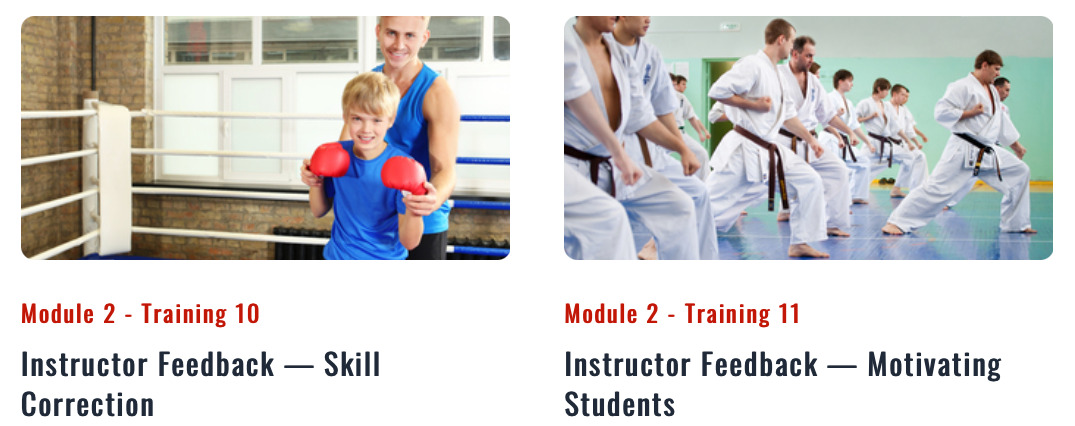Teaching Strategies for Student Motivation and Safety
Many ideas have already been presented in this chapter for maintaining student safety. Student motivation can also be a factor affecting safety during training. Students who are motivated are also more focused and attentive to what they are doing. This high level of concentration should translate into a greater awareness of the physical actions being performed and what effect they may have on a training partner or others close by.
Initially, students should be matched together (when the planned progression of training reaches the partner-training stage) according to similar physical size and skill level. This situation promotes safety in that one student will not likely physically dominate another student due to greater size or skills. However, as students’ abilities improve, they should be subjected to training with others of various sizes and skill levels. This will make them better prepared to face any potential foe on the street.
Create scenarios where the student is forced to react to different stimulus. This will keep the minds focused on what is being done, whereas consistently working with the same partner in the same training method (the same stimulus) can create a “no-mind” scenario, where the student becomes so familiar with the actions and reactions of his consistent partner that the level of mental awareness declines, thus compromising the safety status of both students. Provide students with the chance to practice with different “opponents,” within the planned progression model.
Also, use a variety of training methods that will enhance mental awareness and keep the student motivated and safe. Game-like training creates a fun atmosphere which can be more easily controlled by an instructor. Some examples of training methods are:
1. Partner Training.
Rotating to a new partner when signaled by the instructor.
2. In-Line Training.
One person stands facing a line of opponents. As the student completes the self-defense technique, the next opponent attacks. The tempo of this method must be controlled by the instructor.
3. Circle Training.
One student is positioned in the center of a circle formed by the other “attacking” students. Assign each “attacking” student an identification tag (number, name, color, etc.). Initially, the circle remains stationary, but as skill levels increase the circle can begin to move in one direction. Further increases in skill level can be challenged by having the “defender” student in the center of the circle close his eyes until the attack is signaled.
The instructor calls out the ID of an “attacker,” who responds with an attacking signal (a kiai, or loud yell, is a good and practical signal) before the actual attack can take place. This provides a bit of a safety time-margin for the defender to respond to the oncoming attack.
The key is to offer a variety of training methods through which the student can learn self-defense and gain proficiency in execution, while always maintaining a practical level of safety.

